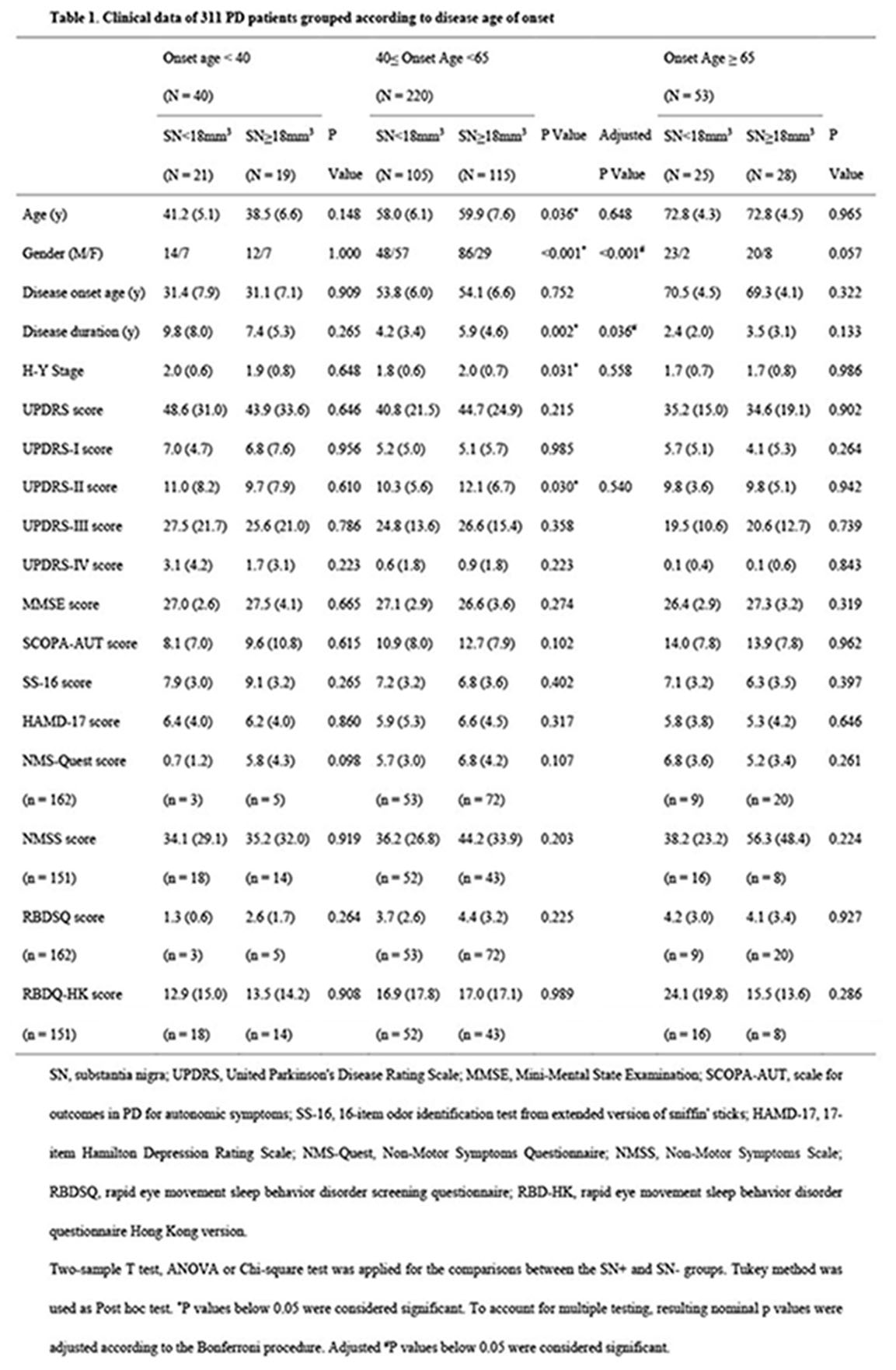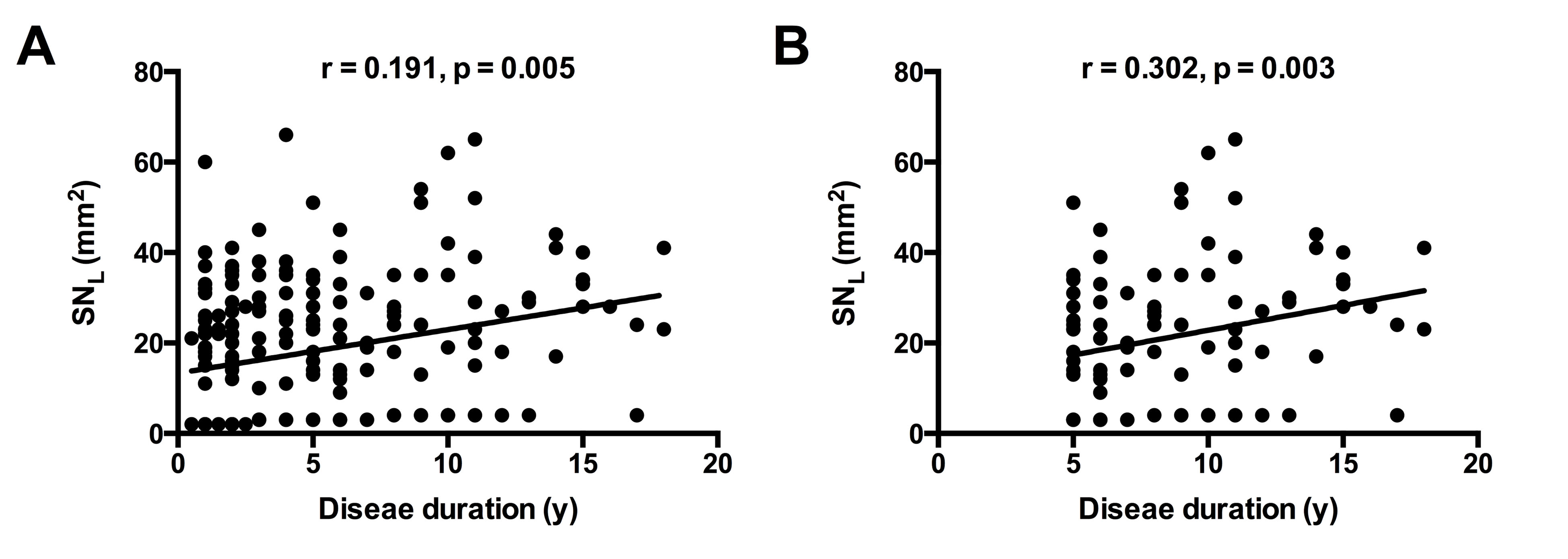Session Information
Date: Monday, October 8, 2018
Session Title: Parkinson's Disease: Neuroimaging And Neurophysiology
Session Time: 1:15pm-2:45pm
Location: Hall 3FG
Objective: We classified Parkinson’s disease (PD) patients into different subtypes and evaluated the correlation between the substantia nigra (SN) echogenicity and disease progression.
Background: It is debatable whether transcranial sonography (TCS) could be a biomarker for monitoring disease progression [1-2]. Various phenotypes of PD may be a major reason contributing to the inconsistency.
Methods: A total of 411 PD patients were included in this study. TCS evaluations of the SN were performed, and motor and non-motor symptoms were assessed by a series of rating scales in all PD patients.
Results: Three hundred and thirteen patients had appropriate temporal acoustic bone windows, and they were divided into three subgroups according to disease onset age. SN hyperechogenicity (SN+) was found to be associated with age, gender, disease duration, H-Y stage and UPDRS-II scores in 220 middle-age onset patients. Regression analysis identified both disease duration and gender as independent predictors for SN+. When this distinct group was separated into male and female subgroups, the correlation between larger SN echogenicity (SNL) and disease duration was positive in males rather than females. When these middle-age onset male patients were classified as tremor dominant (TD) and non-TD subtypes, it turned out that correlation between disease duration and SNL only existed in male non-TD PD patients. [table 1] [figure 1] [figure 2]
Conclusions: Our study demonstrated correlation between the size of SN echogenicity and disease duration in Chinese patients with PD who were male non-TD subtypes with middle-age onset, suggesting the formation of SN echogenicity might be a dynamic process following disease progression in this distinct subtype.
References: [1] Walter U, Dressler D, Wolters A, Wittstock M, Benecke R (2007) Transcranial brain sonography findings in clinical subgroups of idiopathic Parkinson’s disease. Mov Disord 22, 48-54. [2] Schweitzer KJ, Hilker R, Walter U, Burghaus L, Berg D (2006) Substantia nigra hyperechogenicity as a marker of predisposition and slower progression in Parkinson’s disease. Mov Disord 21, 94-98.
To cite this abstract in AMA style:
P. Huang, H.Y. Zhou, S.D. Chen. Substantia Nigra Echogenicity Associated with Clinical Subtypes of Parkinson’s Disease [abstract]. Mov Disord. 2018; 33 (suppl 2). https://www.mdsabstracts.org/abstract/substantia-nigra-echogenicity-associated-with-clinical-subtypes-of-parkinsons-disease/. Accessed April 20, 2025.« Back to 2018 International Congress
MDS Abstracts - https://www.mdsabstracts.org/abstract/substantia-nigra-echogenicity-associated-with-clinical-subtypes-of-parkinsons-disease/



